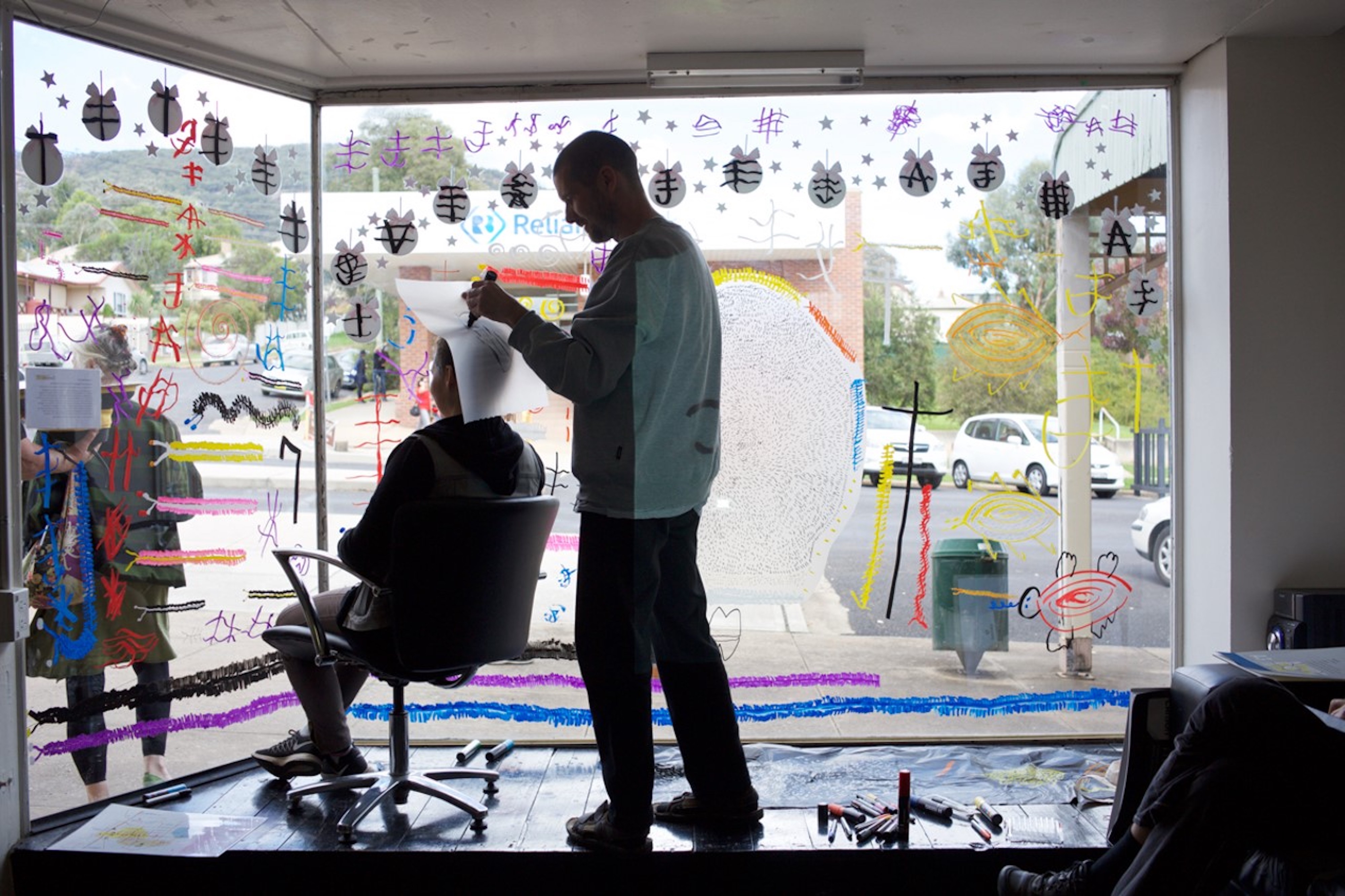Re-touche
Re-Stitching Fissures Through Affect in Families with a Family Member who is Labelled as Disabled
DOI:
https://doi.org/10.18432/ari29568Keywords:
arts-based research, siblings, disability label, family fissures, creating, affectAbstract
Creativity and affect in families with a family member, who is labelled as disabled, is central in this article. These families are often pinned down to individual, closed categories where everything revolves around the label “disability.” Our research goes beyond binary thinking in terms of abled/disabled and other linear explanations by using artistic processes as ethnography. We start from encounters between two people who both created something about their “non-ordinary” brothers. One (first author) made a shortfilm/documentary about her own family, the other (research participant) wrote a TV series about a man who takes care of his brother after their mother’s death, which was not autobiographical yet inspired by his own experiences. The first author distilled etchings from their encounters, which piece together different layers: the scenarist’s biographical story, the story of creating the series, the series’ script and the first author’s thoughts and readings. The concept of re-touche—of touching and being touched, and in this way returning to family fissures and creating something new from them—runs through this art-based project.
Downloads
Published
How to Cite
Issue
Section
License
Copyright (c) 2021 Marieke Vandecasteele, Elisabeth De Schauwer, Inge Blockmans, Geert Van Hove

This work is licensed under a Creative Commons Attribution-NonCommercial-NoDerivatives 4.0 International License.
Authors who publish with Art/Research International agree to the following terms:
a. Authors retain copyright and grant the journal right of first publication and the right to sublicense the Contribution, in the form in which it is published by the journal, to others under the terms and conditions of the of the Creative Commons Attribution-NonCommercial-NoDerivs (CC BY-NC-ND) that allows others to download the work and share the work with others with an acknowledgement of the work's authorship and initial publication in this journal, but they cannot change the work in any way or use any part of the work commercially.
b. Authors are able to enter into separate, additional contractual arrangements for the non-exclusive public distribution and display of the journal's published version of the work (e.g., post it to an institutional repository or publish it in a book), with an acknowledgement of its initial publication in this journal.
c. Authors are permitted and encouraged to post their work online (e.g., in institutional repositories or on their website) prior to and during the submission process, as it can lead to productive exchanges, as well as earlier and greater citation of published work (See The Effect of Open Access).
d. Authors wishing to include items (such as images or other media, or any creative works of others whether previously published or not) must contact the original copyright holder to obtain explicit permission to publish these items in Art/Research International. Writing permission should include: the title(s) of any copyrighted work, original place of publication if applicable, and an acknowledgement of having read Art/Research International's copyright notice. Authors are responsible for obtaining this permission and keeping it in their own records for later verification.



